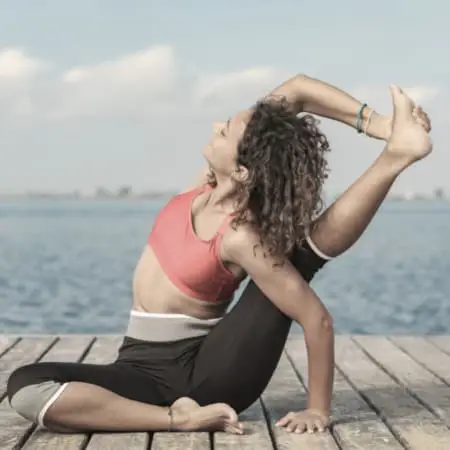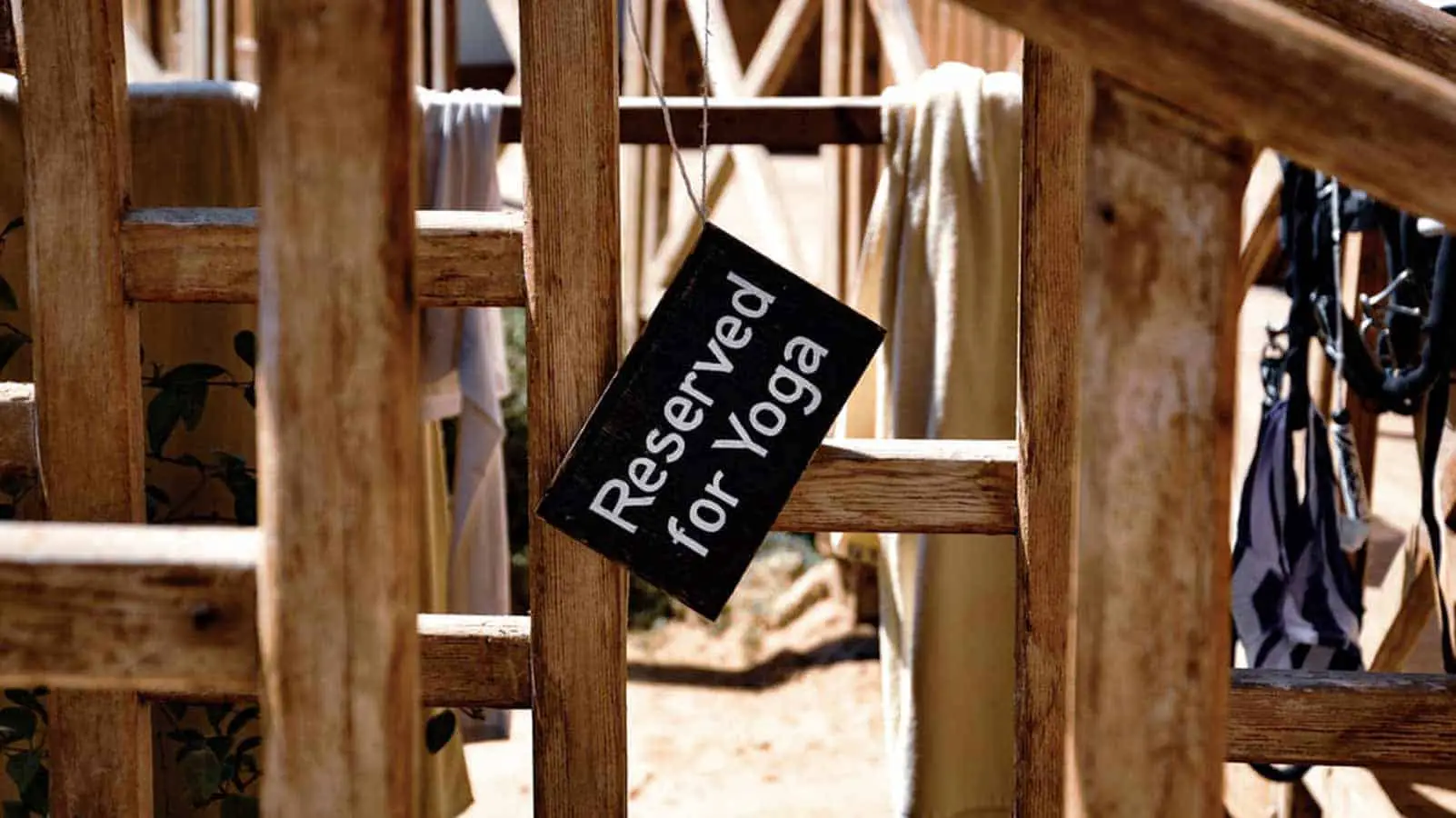When most people think of yoga, they think of twisting into strange yoga positions, incredible flexibility, and maybe even a group of people sitting in a room together, cross-legged chanting Sanskrit word “OM.”
While some of that might be true, it’s certainly not all that yoga is. After many years of seeing yoga as not much more than a hobby or even just as an exercise, people are starting to recognize it for what it really is: Yoga is a Lifestyle made up by the Eight Limbs of Yoga.
While yoga is best known for its physical practice, also known as the asanas (poses), it goes much deeper than that. Traditionally, the physical aspect of yoga was only ever seen as just a piece, be it an important piece, of the entire yogic puzzle.
Patanjali, the creator of the yoga sutras, offered a precise definition of what yoga is stating, “yoga is the removal of the fluctuations of the mind”, often referred to in its original Sanskrit as “Yogas Chitta Vritti Nirodhah.” This definition makes a clear the pivotal role the mind takes in yoga, alongside the body.
Yoga for the Mind
While it might be hard to recognize in the west, yoga is so much more than fancy-looking postures and stretchy pants. The real goal of yoga, if understood by Patanjali’s definition, is to gain control of the mind. This validates one of the most common reactions that people have to their first experience with yoga. While many cite having an intense, satisfying, and challenging physical experience, just as many or even more, indicate the mental clarity and peace to be what really kept them coming back. In essence, they got a taste of the emerging body-mind-spirit connection through their asana practice, something which had not previously been felt before.
Differentiating yoga from a hobby or an exercise and a lifestyle means not only practicing the asanas on a regular basis, but also practicing the Yogi principles outside the studio and off the mat. Yoga is a design for living.
It provides us with the blueprints through which we can live our lives. It helps direct our thinking, emotions, and our behaviors, not only as they relate to our interactions with the outside world and those around us, but also in our relationship with ourselves and with our Oneness with all beings.
Maybe you’ve already developed an asana practice which for many is the door through which they enter the world of yoga, providing space and availability in the heart and mind to begin living the yogic path. The Eight Limbs of Yoga is the basic blueprint through which we use to achieve daily yogic living. While each limb is vast, involved, and worth exploring with much thoughtfulness and depth, a basic understanding of the Eight Limbs of Yoga will assist in beginning to understand what a yogic lifestyle is all about and ideally will lead to more interest to explore further aspects of living the philosophy of yoga.
Yamas
The first limb of the eight limbs of yoga is the Yamas, the moral, ethical, and spiritual guidelines followed to reach balance, health, and well-being, leading to spiritual development. The Yamas consist of non-violence (Ahimsa), truthfulness (Satya), non-stealing (Asteya), sense control (Brahmacharya), and non-coveting (Aparigraha).
It is not surprising to see yogis becoming vegetarian or vegan, or being mindful when selecting environmentally friendly yoga mats. Their choices can be tracked back to this Yama.
Niyamas
The second limb of yoga is Niyama, translated loosely as “laws,” which deal with our internal relationship with ourselves. The niyamas are essential to living a genuine yogic lifestyle and reaching one’s full spiritual potential. The first niyama is Saucha (purity, cleanliness of mind, speech and body), Santosha, (contentment, acceptance, optimism), Tapas (persistence, perseverance, austerity), Svadhyaya (self-study, self-reflection), and Isvara Pranidhana (contemplation of the Divine).
An in-depth individual study of each of the Yamas and Niyamas is vital to living the yogic path, which can be developed through further research, practice, and dedication.
Asana

The third and best-known limb of yoga is Asana or physical practice. Asana is often mistaken for yoga itself, but in reality, it is just a piece of the larger yogic puzzle. Nevertheless, Asana is an integral part of a yoga lifestyle. Physical practice, such as attending a yoga class or having an at-home practice, helps steady the mind, creating peace and balance. It’s essential first to recognize that the body and mind are innately connected to make Asana a part of your lifestyle.
Pranayama
Pranayama, or life force, is the fourth limb of the Eight-fold Path of Yoga. Pranayama is also known as the breath, as well as the ways through which we control and direct the energy of the breath. Pranayama is vital to living a yogic lifestyle because it fosters peacefulness, relaxation, and aids in meditation. There are plenty of Pranayama exercises, each of which will work differently for different people.
Pratyahara
Pratyahara is the fifth of the Eight Limbs of Yoga and refers to disconnection from the senses. This might seem abstract, but it is in fact quite simple. Practicing Pratyahara means becoming less affected by external forces which are out of our control. It says, for instance, being able to react, both internally and externally, calmly and peacefully that about your colleague getting the promotion instead of you, your car breaking down, or your partner forgetting your anniversary again.
Dharana
Dharana is the sixth limb of the Eightfold Path of Yoga and can be understood as “concentration.” Sometimes misunderstood as meditation, Dharana or concentration is the steadying of the mind on one specific point, such as the breath. It is connected to the next Limb, although they vary in distinct ways.
Dhyana
The seventh limb of the Eightfold Path of Yoga is Dhyana, which is interpreted as meditation. Unlike Dharana, Dhyana involves a state of quietness of the mind, with little or no mental interruptions from the outside world. While many regular meditators have the goal of reaching this state, it is seldom accessed and is a rare place to arrive to for any meditator, experienced or not. But with regular practice of the Eight Limbs of Yoga and attempting to live a yogic lifestyle to the best of one’s ability, it is possible.
Samadhi
Samadhi, or transcendence, is the eighth limb of yoga. At this point, pure bliss is achieved and a feeling of Oneness will all living beings is present. It is ultimate peace and joy. This is what you might call “enlightenment.” Ultimately, the goal of living a yogic lifestyle is to achieve Samadhi. That said, Samadhi is not reached or yearned for. Instead, it is a natural byproduct of following and practicing the prior seven limbs of the eight-fold path.
8 Limbs of yoga and our Daily life
Once you do have a basic understanding of the Eight Limbs of Yoga, it becomes natural to practice them on a daily basis. Believe it or not, we already practice many of them without even realizing it, such as the third limb, or yoga asana. Consciously applying the eight limbs throughout each day, to the best of our ability, will lead to higher-quality of life. When we dedicate ourselves to a consistent meditation, mindfulness, and asana practice, the doorway for a full yogic lifestyle is opened.
Conclusion
Keep in mind, we don’t need to abandon the way in which we live now to start living the Yogic Lifestyle. It comes down to small, incremental choices to act in accordance with our Highest Self, meaning that we do our best to act with kindness and compassion in our hearts both to ourselves and to those around us. Life will continue to be on its own terms despite us – there will still be hardships, fear, anxiety, and unexpected situations. The point – and promise of – making a conscious effort to live a yogic lifestyle is to lessen those types of occurrences and, most importantly, how to navigate them successfully with an open heart and mind.








